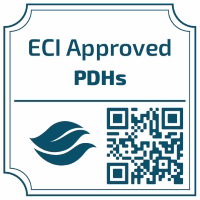Back
Claim Credit Verification Code: 2026
One (1) Hour Workshop
Stormwater Management
Approved Flocculant Lists and Why More States Need Them
Wednesday, February 26, 2025
10:50 AM – 11:50 AM ET
Location: E11A
CE: 1 PDH
Level of Presentation: Intermediate
- KW
Kyla J. Wood, PhD
Chief Science Officer
Applied Polymer Systems, Inc.
Marquette, Michigan, United States
Presenter(s)
Chemical treatment is a general term for dozens of materials that can be applied to land and water for erosion and sediment control and stormwater management. We commonly hear these referred to as flocculants, additives, polymers, biopolymers, coagulants, and many more. Most federal and state governments provide guidance on what chemicals are allowed and how to use them. However, specific guidance on how to safely and effectively use each chemical product is based on manufacturers guidance. The responsibility and pressure of selecting and vetting chemical products and their manufacturers is often left to the contractor, designer, BMP providers, and erosion and sediment control professionals. A few select states have developed more robust guidance by providing state-reviewed pre-approved flocculant lists. The lists provide information on products with complete toxicity data and provide calculated maximum safe use levels of each product to ensure safe application. These lists are valuable tools for individuals seeking to use flocculants to manage challenging erosion and sediment issues on their projects. This workshop will discuss approved flocculant lists, what they are, how they are derived, and most importantly, how they can be used to improve the use of flocculants across the US.
Full Abstract: Chemical treatments have become a staple for enhancing traditional erosion, sediment, and stormwater BMPs and meeting water quality standards. Chemical treatment is a technology with many names that are often confused and used interchangeably. Commonly used names include chemicals, flocculants, polymers, biopolymers, coagulants, additives, polyacrylamides, PAMs, tackifiers, and many more. These categories can broadly be classified as chemical treatment. Essentially chemical treatment is any chemical that is applied to land or water in erosion, sediment, and stormwater management. Wading through what, when, and how to use each chemical treatment can be challenging even for the most experienced erosion and stormwater professionals.
Resources are available to aid users in selecting and applying chemical treatments. Federal guidance can be found in the 2022 Construction General Permit (CGP) and EPA stormwater BMP fact sheet. State guidance is found in state CGPs, erosion and sediment control and stormwater manuals, chemical treatment specifications, and DOT documents and qualified products lists. Although there are some overlapping federal and state regulations, guidance on the correct use of each specific product hinges on following manufacturer guidance. This allows each unique product to hypothetically be used correctly, but puts significant pressure on contractors, designers, and erosion and sediment control professionals to vet individual products and companies. Each type of chemical treatment can also have vastly different use rates and toxicities. Ensuring use rates are below toxic amounts is of utmost importance for environmental applications. Improper use of chemical treatment can result in poor results, or in worst case cause toxicity to organisms in soil or water. A small subset of states has provided more robust guidance by developing pre-approved (or previously reviewed) chemical treatment lists. These published lists include reviewed chemical treatments and list the product, company, and a calculated safe (or allowable) use level for each individual product. These lists provide a quick reference for those seeking chemical treatment solutions, as well as provide usable guidance to compare manufacturer suggested application rates to listed safe use rates.
This presentation will introduce approved flocculant lists, what they are, how they are developed, and most importantly how they can be used as a valuable resource to ensure safe chemical use. Currently only 3 states keep an approved chemical treatment list, but the advantages warrant discussion and consideration from other states. This presentation will also discuss the benefits and disadvantages of the lists and information that could improve the lists themselves as well as simplify their use. Chemical treatments are essential and using them safely benefits all parties including contractors, designers, regulators, manufacturers, and the users of our many valuable water resources. Approved chemical treatment lists are an avenue to achieve mutually beneficial goals of safe and effective chemical treatment use.
Full Abstract: Chemical treatments have become a staple for enhancing traditional erosion, sediment, and stormwater BMPs and meeting water quality standards. Chemical treatment is a technology with many names that are often confused and used interchangeably. Commonly used names include chemicals, flocculants, polymers, biopolymers, coagulants, additives, polyacrylamides, PAMs, tackifiers, and many more. These categories can broadly be classified as chemical treatment. Essentially chemical treatment is any chemical that is applied to land or water in erosion, sediment, and stormwater management. Wading through what, when, and how to use each chemical treatment can be challenging even for the most experienced erosion and stormwater professionals.
Resources are available to aid users in selecting and applying chemical treatments. Federal guidance can be found in the 2022 Construction General Permit (CGP) and EPA stormwater BMP fact sheet. State guidance is found in state CGPs, erosion and sediment control and stormwater manuals, chemical treatment specifications, and DOT documents and qualified products lists. Although there are some overlapping federal and state regulations, guidance on the correct use of each specific product hinges on following manufacturer guidance. This allows each unique product to hypothetically be used correctly, but puts significant pressure on contractors, designers, and erosion and sediment control professionals to vet individual products and companies. Each type of chemical treatment can also have vastly different use rates and toxicities. Ensuring use rates are below toxic amounts is of utmost importance for environmental applications. Improper use of chemical treatment can result in poor results, or in worst case cause toxicity to organisms in soil or water. A small subset of states has provided more robust guidance by developing pre-approved (or previously reviewed) chemical treatment lists. These published lists include reviewed chemical treatments and list the product, company, and a calculated safe (or allowable) use level for each individual product. These lists provide a quick reference for those seeking chemical treatment solutions, as well as provide usable guidance to compare manufacturer suggested application rates to listed safe use rates.
This presentation will introduce approved flocculant lists, what they are, how they are developed, and most importantly how they can be used as a valuable resource to ensure safe chemical use. Currently only 3 states keep an approved chemical treatment list, but the advantages warrant discussion and consideration from other states. This presentation will also discuss the benefits and disadvantages of the lists and information that could improve the lists themselves as well as simplify their use. Chemical treatments are essential and using them safely benefits all parties including contractors, designers, regulators, manufacturers, and the users of our many valuable water resources. Approved chemical treatment lists are an avenue to achieve mutually beneficial goals of safe and effective chemical treatment use.
Learning Objectives:
At the conclusion of this presentation, attendees will:
- Identify what a approved flocculant lists are as well as their purpose
- Illustrate how product application rates and calculated use levels can be applied to ensure safe flocculant use
- Assess the benefits of approved flocculants list as well as understand possible disadvantages and improvements that could be made

.jpg)


